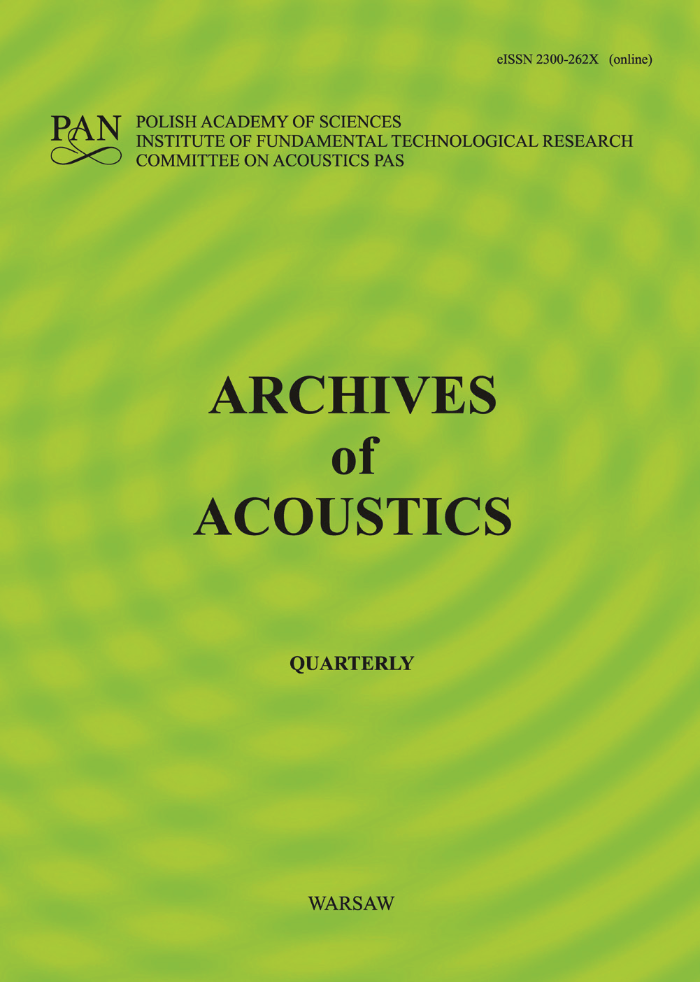Other articles by the same author(s)
- Andrzej RAKOWSKI, The Domain of Pitch in Music , Archives of Acoustics: Vol. 34 No. 4 (2009)
- Piotr ROGOWSKI, Andrzej RAKOWSKI, Pitch Strength of Residual Sounds Estimated Through Chroma Recognition by Absolute-Pitch Possessors , Archives of Acoustics: Vol. 35 No. 3 (2010)
- Elżbieta ARANOWSKA, Maria MANTURZEWSKA, Piotr ROGOWSKI, New method for the estimation of homogeneity of individual judgements in psychoacoustical experiments , Archives of Acoustics: Vol. 32 No. 3 (2007)
- Andrzej RAKOWSKI, Ken'ichi MIYAZAKI, Absolute pitch: Common traits in music and language , Archives of Acoustics: Vol. 32 No. 1 (2007)
- Andrzej RAKOWSKI, Piotr ROGOWSKI, Experiments on long-term and short-term memory for pitch in musicians , Archives of Acoustics: Vol. 32 No. 4 (2007)
- Antoni JAROSZEWSKI, Andrzej RAKOWSKI, A Békésy audiometer with electronic signal level control and its application to psychoacoustical measurements , Archives of Acoustics: Vol. 1 No. 3 (1976)
- Antoni JAROSZEWSKI, Andrzej RAKOWSKI, Analysis of the initial fraction of Békésy recordings in the threshold audiometry* , Archives of Acoustics: Vol. 1 No. 4 (1976)
- Andrzej RAKOWSKI, Marietta MORAWSKA-BÜNGELER, In search for the criteria of absolute pitch , Archives of Acoustics: Vol. 12 No. 2 (1987)
- Antoni JAROSZEWSKI, Andrzej RAKOWSKI, Analogue modulator for psychoacoustical pulse measurements , Archives of Acoustics: Vol. 1 No. 1 (1976)
- Antoni JAROSZEWSKI, Andrzej RAKOWSKI, Psychoacoustical equivalents of tuning curves as determined by the post-stimulatory masking technique , Archives of Acoustics: Vol. 1 No. 2 (1976)


